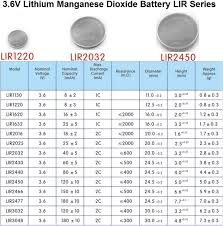Intro
Quick Navigation
Almost every device you see is powered by something – a battery. It doesn’t matter whether it is rechargeable or non-rechargeable, as long as it does what it is expected to do. Before using a device, what you need to check alongside other features is the kind of battery it uses. There are various types of batteries, and it wouldn’t be fair if you had bought the wrong type.
One of the several sorts of batteries is the Button/Coin Cell Battery. It is a non-rechargeable battery often used for remote controls, car keys, medical equipment, hearing aids, etc. Likewise, there are different types of Button/Coin Cell Battery depending on the chemical components –Silver-Oxide, Mercury-Oxide, Alkaline, Zinc-air, etc.
Now you don’t go ahead to pick any button cell battery without checking some factors. One of these factors is the watch battery cross reference chart, OR Button Cell Battery Chart, and Sizes. After you must have gone through the chart, then you should look at models and manufacturers.
This article aims to describe the various types of button cell batteries alongside charts for complete understanding.
Questions
What are the Different Types of Button Cell Batteries?
As mentioned earlier above, the different types of coin cell batteries include Alkaline, Mercury Oxide, Zinc Air, and Silver Oxide.
- Alkaline Button Cell Battery
One of the cheapest and most reliable coin cell batteries you could ever use is the alkaline battery. It is an ideal choice for electronic devices that consume low voltage. It has a nominal capacity of 1.5v, making it drop consistently as it is used. It further has a total capacity ranging between 110-130mAh to perform excellently.
Alkaline Coin Cell Battery is marked by LR##, AG##, and LR####. Finally, it has a shelf life below 5 years.
- Mercury Oxide Button Cell Battery
Mercury Oxide Button Cell Battery is another type; however, you may not find it too often. The reason is that it contains Mercury, an element believed to be responsible for many environmental hazards. The battery, following its design, has a low voltage but its capacity is quite good, i.e., 1.35v, and 180-200mAh. With the reality of its disuse, it is a little difficult to predict its shelf life.
| Button Cell Battery Types | Voltage (V) | Capacity (mAh) | Shelf Life (Years) | Labels |
| Alkaline | 1.5 | 110-130 | 5 | LR##, AG##, and LR####. |
| Mercury Oxide | 1.35 | 180-200 | 2-5 | MR##, MR#### |
| Silver Oxide | 1.55 | 150-200 | 10+ | SR##, SR####, or AG##. |
| Zinc Air | 1.4 – 1.45 | 600-700 | 4 to 5 | PR##, P###, and Z### |
- Silver Oxide Button Cell Battery
Another famous type of button cell battery is the Silver Oxide. It is affordable and promises long-term use with a shelf life of over 10 years. This battery has a good nominal voltage that makes it perfect for operating several mini devices. It also has a large capacity between 150 to 200mAh for an excellent performance. Additionally, Silver Oxide alkaline cell batteries are marked by SR##, SR####, or AG##.
- Zinc Air Button Cell Battery
The last coin cell battery is the Zinc-Air. It combines Zinc elements with natural air from oxygen for operation. It is an ideal choice of battery for hearing aids, and other mini devices. It has a good voltage, slightly higher than those for Alkaline, with a good capacity (600-700mAh) for performance. However, the shelf life is between the range of 4 to 5 years.
What is the Type Designation?
The Type of Designation is the alphanumeric coding system used for watch batteries. It is also called the International Standard IEC 60086-3. Each manufacturer has its Type Designation/naming system. Now, this means button cell batteries are not left out. For example, a coin battery like LR1154 has its Type Designation as AG13, LR44, A76.
The naming system is borne out of three factors – Electrochemical System, Package Size, Letter Suffix.
Electrochemical System
Out of all the letter codes, the L, S, and C type cells are the most popular; they are used in watches, calculators, computer clocks, etc. On the other hand, P-type cells are only useful in hearing aids and other medical equipment.
| Letter Code | Name | Cathode | Anode | Electrolyte |
| L | Alkaline | Manganese Oxide | Zinc | Alkali |
| S | Silver | Silver Oxide | Zinc | Alkali |
| P | Zinc Air | Oxygen | Zinc | Alkali |
| C | Lithium | Manganese Oxide | Lithium | Organic |
| M, N | Mercury | Mercuric Oxide | Zinc | Alkali |
Package Size
The other factor used in naming coin cell batteries is the package size. It is represented by a 2-digit code or 3- to 4-digit code. If it comes as a 2-digit code, then it describes the standard case size; however, a 3- to 4-digit code represents diameter and height.
The diameter codes are quite specific, i.e., the nominal diameter has a specific measurement (in mm) following its number code. Check the table below.
| Number Code | Nominal Diameter (in mm) |
| 4 | 4.8 |
| 5 | 5.8 |
| 6 | 6.8 |
| 7 | 7.9 |
| 9 | 9.5 |
| 10 | 10.0 |
| 11 | 11.6 |
| 12 | 12.5 |
| 16 | 16.0 |
| 20 | 20.0 |
| 23 | 23.0 |
| 24 | 24.5 |
| 44 | 5.4 |
Therefore, if you have:
Cr2032 – Lithium Type; 20mm Diameter; 3.2mm Height
LIR2032 – Alkaline Type; 20mm Diameter; 3.2mm Height
Letter Suffix
The extra letters that are found in the Type Designation represent the type of electrolyte.
Are Coin Cell Batteries Expensive?
Button Cell Batteries are light, high-density non-reusable batteries that offer great benefits for a good period. They have a good cell voltage with incredible shelf life, making them suitable for various purposes. More importantly, they are affordable regardless of the manufacturer. For instance, you could get a Cr2032 battery for less (about $0.40).
Depending on the manufacturer, you may find unit sizes, i.e., amount in the pack. Thus, while being affordable, you have the opportunity to use as much as you can over a period.
Conclusion
With this article on Button Cell Battery Chart and Sizes, it is obvious that coin cell batteries are quite different from themselves. You must now have to selectively choose what is perfect for the device involved – it shouldn’t be so difficult.

